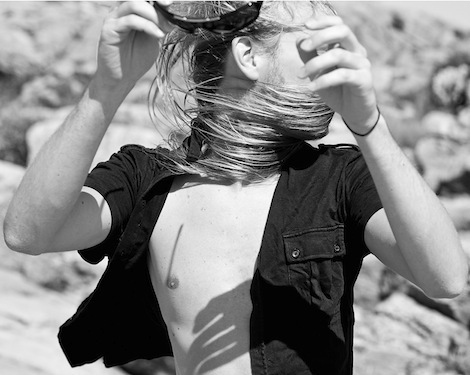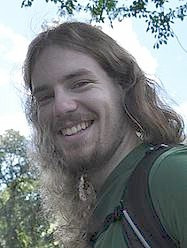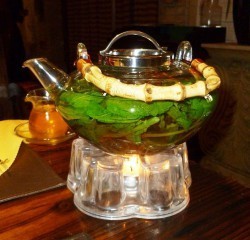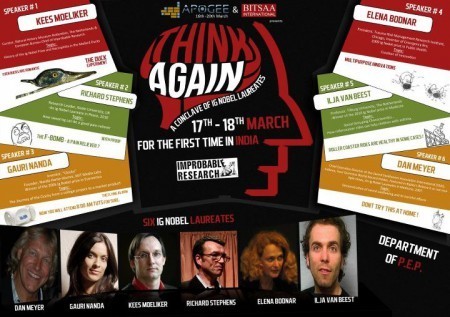Marc Abrahams's Blog, page 593
February 23, 2012
Eiko Fried joins LFHCfS
Eiko Fried has joined the Luxuriant Flowing Hair Club for Scientists (LFHCfS). He says:
In all modesty, I do believe that I was bestowed upon by our Noodly Creator with luxuriant flowing hair. The resemblance of my hair with His Noodly Grace is evident, which can be seen as proof that HE created us in his very image. I myself am an evolutionary psychopathologist, delving deep into the noodly mysteries that lie within what we consider today as the human species. My two hairiest fields of interest are:
(1) The human genome and its double-helix, closely resembling Fusilli, Gemelli, but above all Rotini.
(2) The human brain with its tangle of spaghetti-like axons and meatball-like structures. Again, I see a close resemblance to Him who created trees, mountains, midgits and probably much more.
Eiko Fried, LFHCfS
Ph.D. student in psychology
Freie Universität Berlin
Berlin, Germany


Roland Pfister joins LFHCfS
 Roland Pfister has joined the Luxuriant Flowing Hair Club for Scientists (LFHCfS). He says:
Roland Pfister has joined the Luxuriant Flowing Hair Club for Scientists (LFHCfS). He says:
I am pleased to be a member in the combined programme of flowing and facial hair. My latest publication is "Effective rotations: Action-effects determine the interplay of mental and manual rotations," Janczyk, M., Pfister, R., Crognale, M., & Kunde, W., (in press) Journal of Experimental Psychology: General.
Roland Pfister, Dipl.-Psych., LFHCfS
PhD student
Department of Psychology
University of Würzburg
Würzburg, Germany

Genetics and ever so much, more or less, of choral singers
This research study tries to encompass many worlds of knowledge or possible knowledge, or wished-for knowledge:
"AVPR1A and SLC6A4 Polymorphisms in Choral Singers and Non-Musicians: A Gene Association Study," Andrew P. Morley, Madan Narayanan, Rebecca Mines, Ashraf Molokhia, Sebastian Baxter, Gavin Craig, Cathryn M. Lewis, Ian Craig, PLoS ONE 7(2), 2012: e31763 The authors, at King's Health Partners Academic Health Sciences Centre in London and at King's College London, report:
"We conducted a genetic association study on 523 participants to establish whether alleles at these polymorphisms occur more commonly in choral singers than in those not regularly participating in organised musical activity (non-musicians)…. In a related musical project involving one participating choir, a new 40-part unaccompanied choral work, 'Allele', was composed and broadcast on national radio. In the piece, each singer's part incorporated their personal RS3 genotype."
BONUS: An essay by Michael Zev Gordon [pictured here], the composer of the musical piece, and a Royal Society of Medicine press release about the music.
BONUS: Genetic Changes in a Population of Boreal Chorus Frogs

A look back at the animals, and forward to Dundee
Here's a video snippet from last year's University of Dundee show on the Ig Nobel Tour of the UK. As the university describes it:
The Dundee Ig Nobel Show in 2011 opened with a parade of animals from D'Arcy Thompson's personal collections. Also featuring a plate of peas (explained later), Prof. Sue Black and Principal Prof. Pete Downes.
We will return to Dundee on Saturday night, March 17, on this year's Ig Nobel Tour of the UK.
This year's show will feature Marc Abrahams, wasabi-fume fire alarm inventor Makoto Imai, co-discoverer of fish-fart-communications Ben Wilson, Sergio Della Sala (who will describe Bulgarian cinema seating in right, mixed, and left handers), and a St. Patrick's Day Special premiere involving William McGonagall: The modern public premiere of a poem—about Ireland—by Scotland (and maybe the world's) most beloved bad poet William McGonagall [whose finest bad works were created, premiered and to some extent tolerated in Dundee] This poem has never been published in any book, and almost certainly has not been performed for more than a century, if ever. —TICKETS are available now.

February 22, 2012
Body parts, and then some
This curious music video, featuring a naked woman and then some,and then less, and then more, is more or less about body parts. So is the January/February issue of the Annals of Improbable Research, but in different ways.
(via io9)

Dr. Redfield, her pink hair, arsenic life and all that
A mini-documentary about pink-haired Dr. Redfield and her take on the much-publicized claim that a form of life in a lake in California has DNA with a curious chemical composition:
[HT @scicurious]

Food-related medical terms (food for thought)
[EDITOR'S NOTE: Gwinyai Masukume is joining our gang of regular bloggers. This is his first post at improbable.com. Please welcome him!]
Besides food acting as source of energy for the brain during thinking, food (drinks, utensils, waiters, etc.) can literally be used for thought. Various situations encountered in medicine have been named after food related entities such as coca cola colored urine, bean shaped G-spot, dinner fork deformity – there are hundreds of such medical culinary terms in the literature. I write about them, in my blog Food related medical terms.
For instance seeing port-wine colored amniotic fluid could clinch the diagnosis of placental abruption – a life threatening condition in which a normally sited placenta (which incidentally means a flat cake) separates prematurely from the womb (which incidentally is pear-shaped). So, a life (or lives) can be saved by noticing port-wine amniotic fluid.
In 2012s first issue of the Croatian Medical Journal, I discuss the critical importance of food related medical analogies [here's the PDF]. I hope you find the discussion tasteful.
 I guess this career in gastronomic medicine was inevitable as I come from Zimbabwe—a place that on the map is more or less shaped like a teapot. At the teapot's snout is Victoria Falls; its other name, Mosi-oa-Tunya, means "the smoke that thunders".
I guess this career in gastronomic medicine was inevitable as I come from Zimbabwe—a place that on the map is more or less shaped like a teapot. At the teapot's snout is Victoria Falls; its other name, Mosi-oa-Tunya, means "the smoke that thunders".
Food for thought.
BONUS: AMNIOTIC FLUID IS ALSO KNOWN AS LIQUOR

Ig Nobel winners gathering in India
The APOGEE science festival, at BITS in Pilani, India has invited a collection of Ig Nobel Prize winners to come star in the festival on March 17 and 18. They have produced this nifty graphic, featuring the six Ig Nobellians who plan to take part:
The Ig Nobel winners themselves are excited to go—and are experiencing a different kind of excitement as each wrestles in possibly-friendly fashion with India's government bureaucracy, which keeps tossing new, innovative paperwork hurdles (visa applications and ever-so-much-more) at them.
Will the Ig Nobellians succeed in the battle to deal with the ever-changing Indian government paperwork? Read this (one of our columns in The Guardian) for some background about the tradition and skill the bureaucrats bring to the contest.

'Poisoner' author reviews Period Table Table inventor's app
Deborah Blum, author of the book The Poisoner's Handbook, reviews "The Elements", the ipad app created by Theo Gray, the Ig Nobel Prize-winning inventor of the four-legged periodic table table:
… Gray's sequel to this success is a print book, Theodore Gray's Element Vault, which includes actual samples of elements, such as gold leaf, and replicas of classic documents from the history of chemistry. In other words, there are still times when a reader wants to hold, touch, review the real thing. But despite my reluctance to warm up to it, his e-book/app remains a wonderful package. It's no wonder that Gray was awarded the 2011 Grady-Stack award for communicating chemistry from the American Chemical Society – or that the publication has been such a phenomenol e-success. And now, if you'll excuse me, I'm leaving to treat myself for another attack of author envy. Perhaps another 100 or so rounds of The Elements Song [see the video below] will help. [Read Blum's entire review here]

February 21, 2012
Stray sock manipulation (with robots)
The ubiquitous 'Stray Sock Syndrome' can be a considerable headache for human sock-owners and sock-sorters. But help is afoot courtesy of the Computer Science Division at the University of California at Berkeley, US, and the Max Planck Institut Informatik, Germany. Where a team of computer scientists and robotics experts have "…considered the problem of equipping a robot with the perceptual tools for reliable sock manipulation."
Their robot (a Willow Garage PR2) has not only been programmed to identify 'stray' socks from a sample of pair-able and non-pair-able socks – but also to physically sort them into pairs – with accuracies approaching 98%.
The stray-sock algorithm can be outlined thus:
"To handle stray socks we start with the lowest scoring (best) pairs and work our way up until the cost exceeds the maximum cost in which the algorithm considers indicative of a proper match. In case of an odd number of socks in the set, we introduce a 'fake sock' which has equal similarity with all socks. The true sock matched to the fake sock is considered a stray sock."
The academic paper: Perception for the Manipulation of Socks, (by Ping Chuan Wang, Stephen Miller, Mario Fritz, Trevor Darrell, and Pieter Abbbeel) was presented at the IEEE/RSJ International Conference on Intelligent Robots and Systems (IROS), 2011.
Note: Any judgements about the niftiness of demonstration above might benefit from tempering with the fact that the video is speeded-up (15 times).
Question: What musical soundtrack might reasonably accompany the video?

Marc Abrahams's Blog
- Marc Abrahams's profile
- 14 followers

























